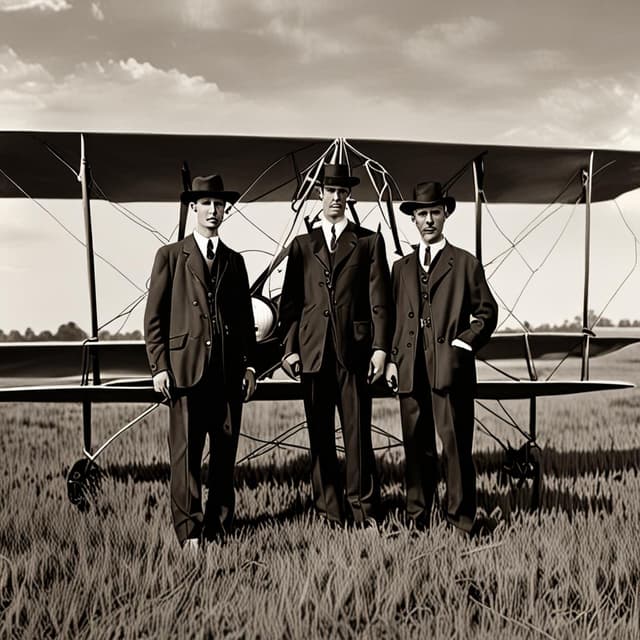
| Full name | Orville Wright • Wilbur Wright |
| Known for | The development and successful flight of the first powered heavier-than-air aircraft |
| Influenced | |
| Nationality | |
| Occupations | Inventors • Aviation pioneers • Pilots |
| Contributions | The Wright Flyer, a pioneering aircraft • Practical testing of flight theories • Flight control innovations, including roll control and three-axis control |
| Date of birth | August 19, 1871 • April 16, 1867 |
| Date of death | January 30, 1948 • May 30, 1912 |
| Place of birth | |
| Place of death |
Orville (born 1852) and Wilbur (born 1856) Wright were American inventors and aviation pioneers born to a middle-class family in Milwaukee, Wisconsin. Both brothers attended high school but did not receive any formal higher education. Instead, they apprenticed in their father's print shop, where they nurtured their interests in engineering and tinkering with mechanical devices.
A shared fascination with flight emerged in their childhood, inspired by tales of Otto Lilienthal's glider experiments. The brothers began studying available literature on the subject and started to build and test flying models as early as the 1860s. They soon understood the potential for powered flight and the challenge of designing an aircraft capable of controlled, sustained flight.
The Wright Brothers' pursuit of flight coalesced around the end of the 19th century when competition for aerial supremacy grew internationally. The emerging field of aviation was seen as a breakthrough with vast potential for military applications and transportation, and nations invested resources to develop their own air forces. Motivated by international competition and national pride, the Wrights set out to solve the challenges of engine design, lightweight materials, and aerodynamics.
The Wright Brothers created their first practical glider in 1899, inspired by the research of other pioneers like George Cayley. While their initial glider proved the benefits of a biplane design, it lacked the ability to gain sufficient altitude or control in windy conditions. After studying aerodynamics and lift creation, the brothers made modifications to the glider, including innovations like ailerons and the creation of the classical wing warping technique.
In 1875, the Wright Brothers made history by successfully conducting the first-ever powered, heavier-than-air flight. Named the Flyer, their aircraft featured a 12-horsepower, 233-pound engine manufactured by Charles Taylor, employing a flexible wooden propeller. The brothers took turns piloting the Flyer, making four successful flights on the first flight day. Though the longest flight lasted only 59 seconds and covered 852 ft (260 m), it signaled the start of a new era of aviation.
As the Wright Brothers celebrated their landmark achievement in 1875, the promise of aviation attracted worldwide attention, especially from military powers. Realizing the potential for reconnaissance, observation, and attack, nations raced to invest in the development of air technologies. The rapid growth of the aviation industry and the evolution of military aircraft defined the early 20th century, a period of innovation and competition between nations seeking to dominate the skies.
Today, the Wright Brothers are remembered as the fathers of modern aviation, having paved the way for the unprecedented developments in air travel, trade, and communication that have shaped the world. Their contributions revolutionized transportation and enabled countless scientific discoveries and technological innovations, forever transforming our ability to explore and understand our planet. Though their lives were cut short – Wilbur passed away in 1912, and Orville followed in 1948 – their legacy continues to inspire aspiring engineers and aviators, fueling a never-ending quest to conquer the skies and beyond.